Summary:
#1 The stock market is breaking records highs almost on a weekly basis pushing many stocks to their 52 weeks high.
#2 Many investors avoid buying shares of those companies based in the fear their price will drop like a rock.
#3 I will show you that the 52 weeks high stats is completely useless and you should not use it at all.
Since 2009, we can tell the stock market has been running one of the most prolific bullish ride for decades. This phenomenon obviously pushes many company shares to their highest price of the past 52 weeks, or even to their highest price ever. For this singular reason, many investors prefer to wait until the stock price eventually drop. They are making a huge mistake. No matter what is happening with the stock market or the price of a particular stock you are following, you should enter the stock market without hesitation. This article will demonstrate that buying 52 weeks high trading stocks should not be ignored for this reason and that the fear of seeing the market drop because of the “gravity effect” is purely an invention.
Time in the market is stronger than market timing
While of educated investors already know this thesis, many of them tend to forget how to apply it to their own portfolio on a regular basis. The longer you stay in the market, the better will become your investment return. But you don’t have to believe me, you only have to be able to read graphs of various financial studies. Let’s start with this one:
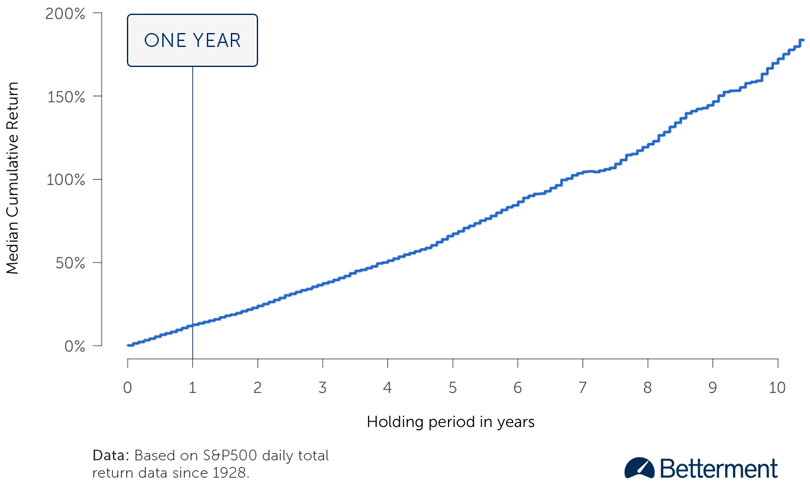
Source: Betterment
This graph shows the median cumulative return of the S&P 500 since 1928. It clearly shows that for any inventors who stays invested for more than 5 years, his expected return would dramatically increase year after year. In other words, if you invest, you should keep your money in for more than 5 years.
Okay, but how about buying when the market is low and stay the course then? Obviously, most investors will not argue by looking at the above mentioned graph. However, they will come up with the objection that currently, the market is over valued. That currently, this great company is overvalued. They rather wait until the next market drop and then enter for the long haul. Unfortunately, they decide to ignore another brutal graph:
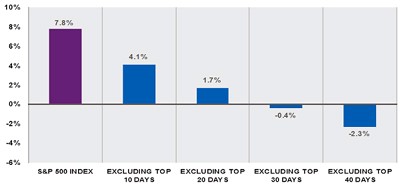
Source: SchwabCenter for Financial Research (Investopedia)
This graph explains that if you miss the 30 top days in any trading years, you will most probably end-up in the red. Why? Because the market is going ups and downs but no one can really know when it will happen. Therefore, those who try to find the great entry point will most probably never find it.
How does those 2 graphs translate into portfolio management strategy? I’ve found two examples where I decided to buy stocks trading at their 52 weeks high.
Example #1 Disney (DIS)
I purchased Disney in the middle of a very strong bull trend:
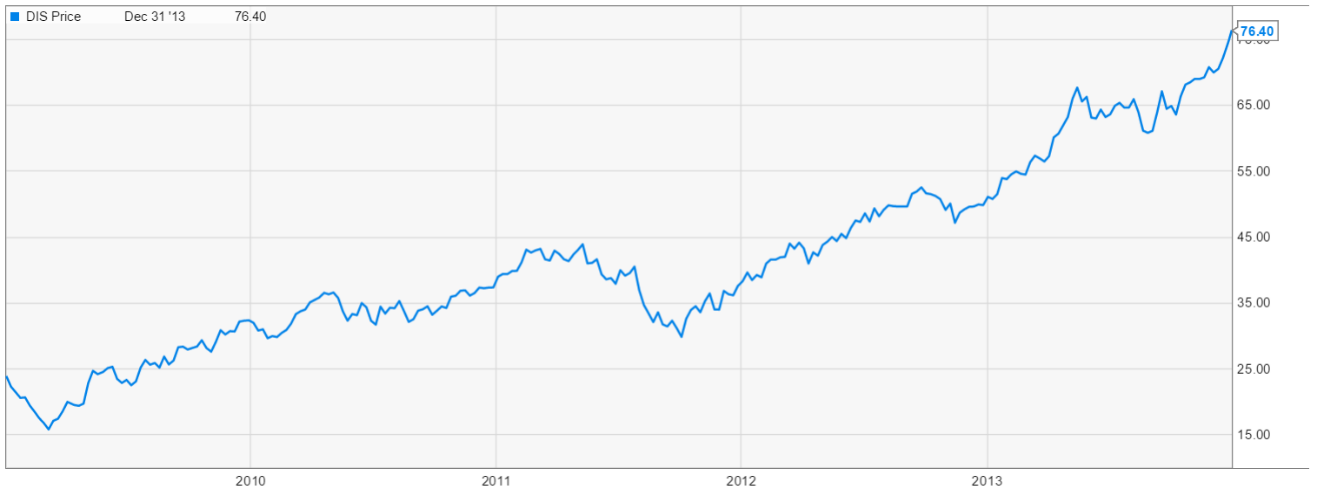
Source: Ycharts
*disclaimer: I bought DIS on May 22nd 2013.
Investment thesis at that time: DIS has become more than entertainment parks and Mickey. It is now the largest entertainment business in the world. Walt Disney is divided into five different segments: Media Networks, Parks and Resorts, Studio Entertainments, Consumer Products and Interactive. The Media division (ABC, The Disney Channel and ESPN) leads DIS revenue shares with 44% of the company total sales.
Disney divisions will benefit from the US consumers spending more, especially with the coming of the new Star Wars trilogy. Finally, Disney is the strongest brand for family entertainment and this competitive advantage is nearly impossible to replicate.
In fact, it was probably worst than buying DIS at its 52 weeks high, it was more like buying DIS at its 5 years high. A “rationale” investor would decided to wait for the next stock drop. Guess what… this investor is still waiting today:
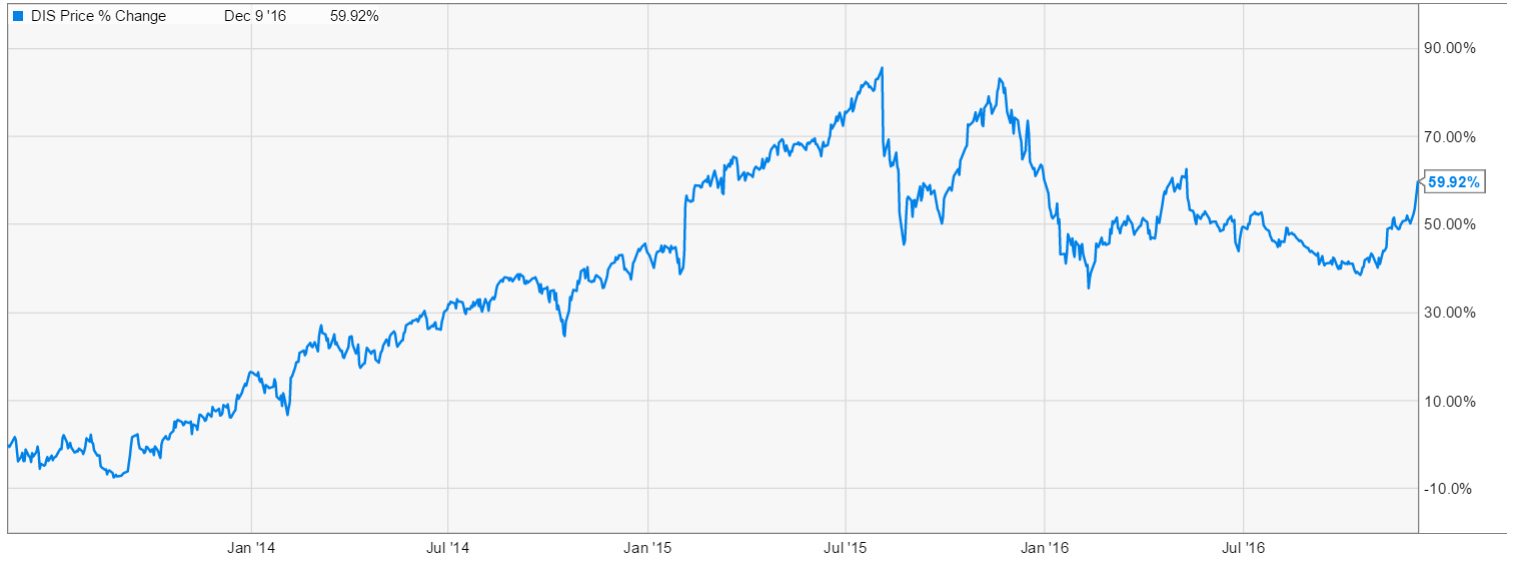
Source: Ycharts
(stock capital gain since my purchase: 59.92%, dividend received: $4.97 per share for 7.59% of my purchase price ($65.49).
While Disney stock is currently going through a more difficult period since July 2015 (when ESPN concerns rose stronger), I’m still showing a very strong investment return of 67.51% over 3 years and a half for a CAGR of 15.88%.
Example #2 Lockheed Martin (LMT)
Similar to my Disney fairy-tale story, I bought shares of Lockheed Martin at their peak:
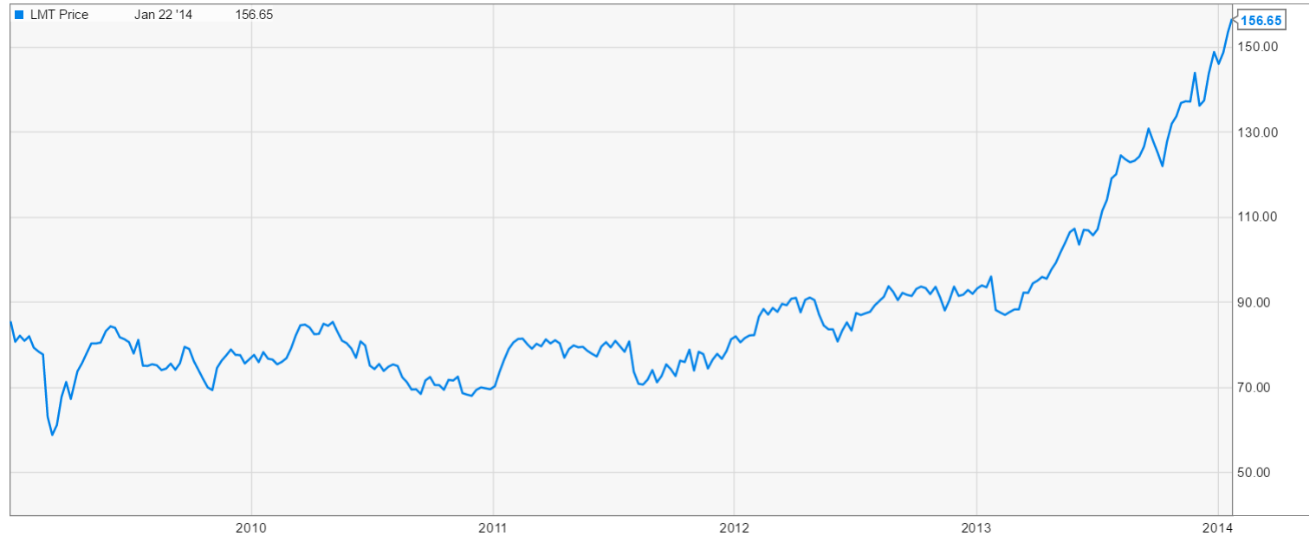
Source: Ycharts
*Disclaimer, I bought LMT on January 22nd 2014
Investment thesis: One of the reasons why I like LMT so much is that it barely evolves in a monopoly. They have obviously lots of competitors, but LMT has become THE defense company the U.S. government go to when it comes down for airplane firefighters for example. Lockheed Martin has done what BlackBerry did a few years ago by controlling the market. Fortunately for them, it is a lot harder to copy a F35 than a smartphone!
LMT clients are closely bond to them for several reasons. First, the trust between both the client and the company is quite important in this case. We are talking about military defense, you will not change your supplier in a heartbeat! Second, the switching cost for their clients would be incredibly high. Lockheed Martin benefits from several long-term contract guaranteeing a steady income flow. Those contracts are not easily broken. Plus, LMT owns a unique experience in military defense products and services.
Then again, looking at this graph doesn’t make any investors want to put its hard-earned money into a stock that has been skyrocketing for 5 years already. Remember the “gravity theory?”; it will go down sooner or later. Well, guess again:
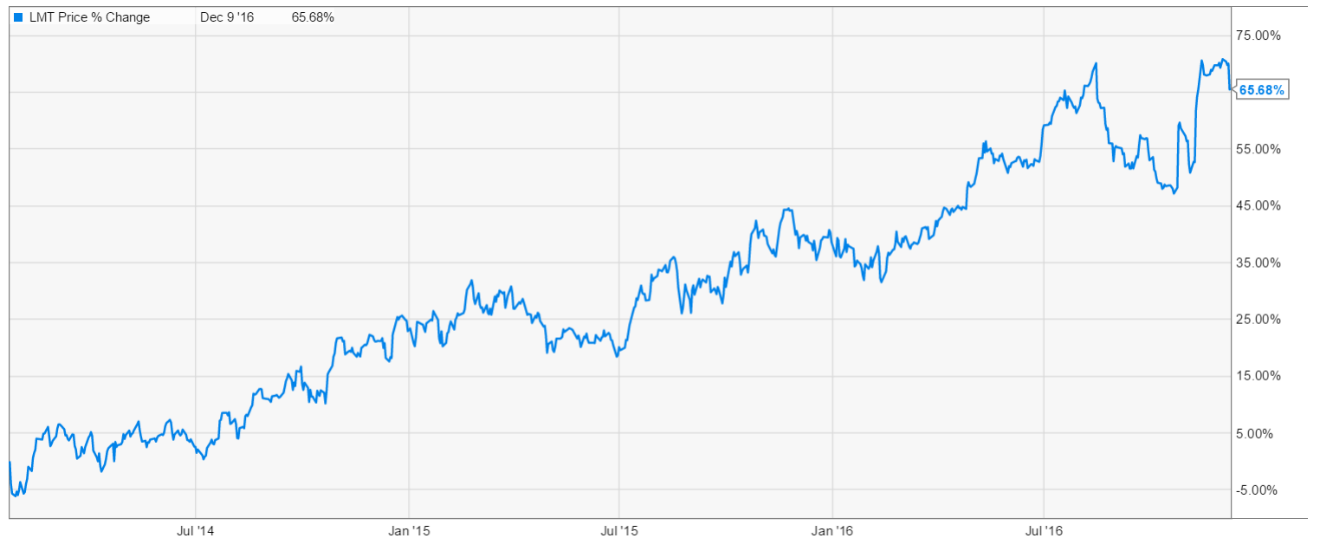
Source: Ycharts
(stock capital gain since my purchase: 65.68%, dividend received: $18.41 per share for 11.82% of my purchase price ($155.76).
After almost 3 years, I’m already comfortably sitting on a 77.5% return for a CAGR of 21.08%.
But those two examples are not here to make me brag about my enlighten power of seeing through the future. I really can’t and I’m not smarter than most of you. However, I apply systematically the 7 principle of dividend growth investing to succeed in the stock market.
The dividend alone is a reason to buy now
The very first reason why you should not mind if a stock trading at its 52 weeks high or not is definitely the dividend payouts you leave behind. Even with a low dividend yield stock like DIS, I still earned a 2.11% CAGR investment return with its dividend payments (based on my cost of purchase). In the case of LMT, it’s even stronger with a CAGR of 3.79% over the past 3 years. Even if both stocks would have stagnated or go down, I would still earn money in the meantime.
If I had waiting on the sideline, I would not only have waited for ever because both stocks never went under their previous 52 weeks high (or barely), but I would have missed a significant amount of dividend paid. Money waiting in cash account doesn’t bring dividend.
What those 2 examples have in common; a strong investment thesis
Instead of spending hours trying to determine the value of a stock, I rather spend those hours on something a lot more productive: defining my investment thesis. A strong company will remain strong no matter what the market thinks about it momentarily. By spending more time on defining the reasons why a company should be part of your portfolio and what would be the worst-case scenario, you define the parameter of a successful trade. Even if you buy it “at a high price”, a long term holding approach will prove you right and will reward you with increasing dividend payments.
Disclaimer:
I’m long DIS & LMT
The opinions and the strategies of the author are not intended to ever be a recommendation to buy or sell a security. The strategy the author uses has worked for him and it is for you to decide if it could benefit your financial future. Please remember to do your own research and know your risk tolerance.
